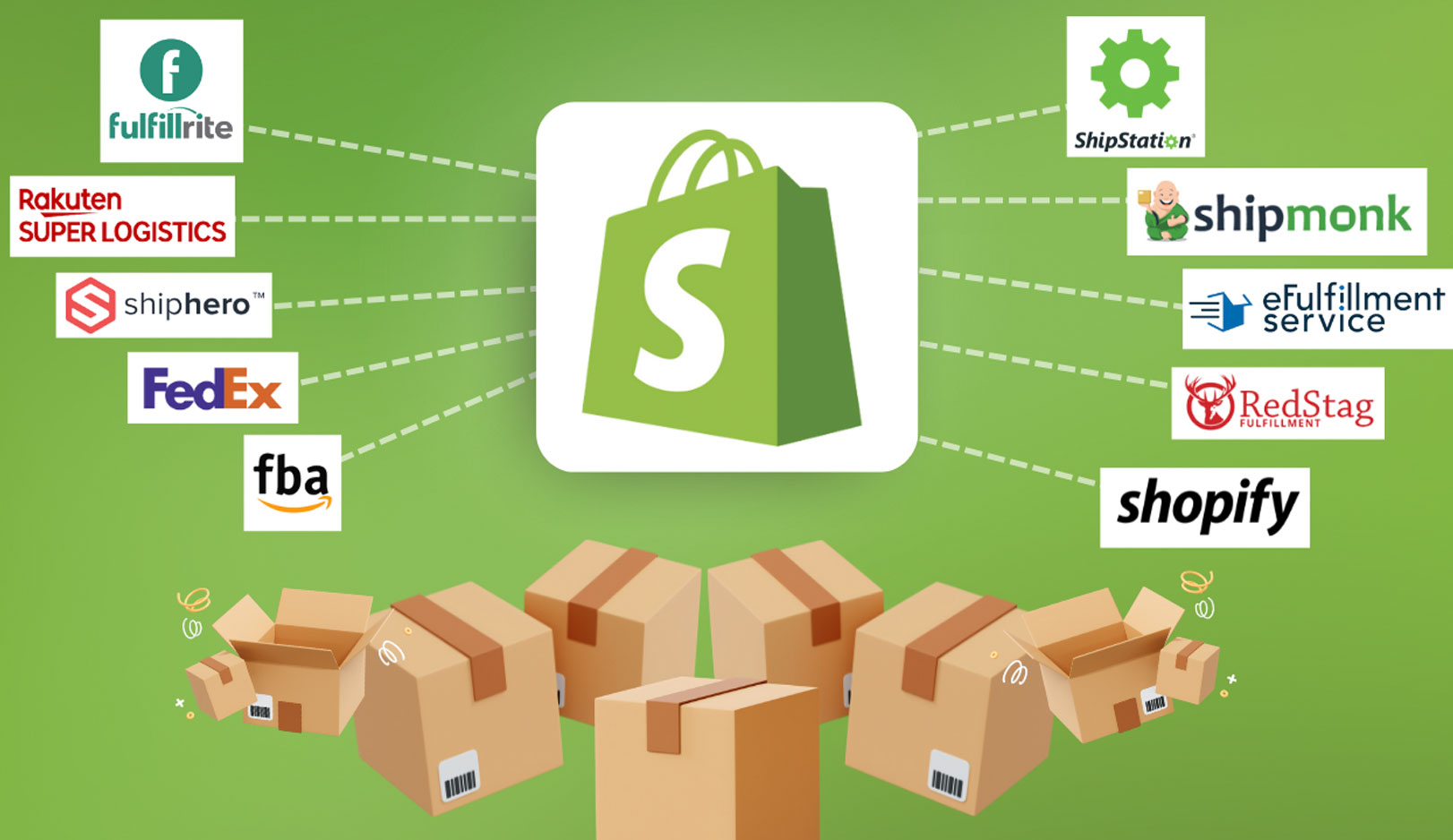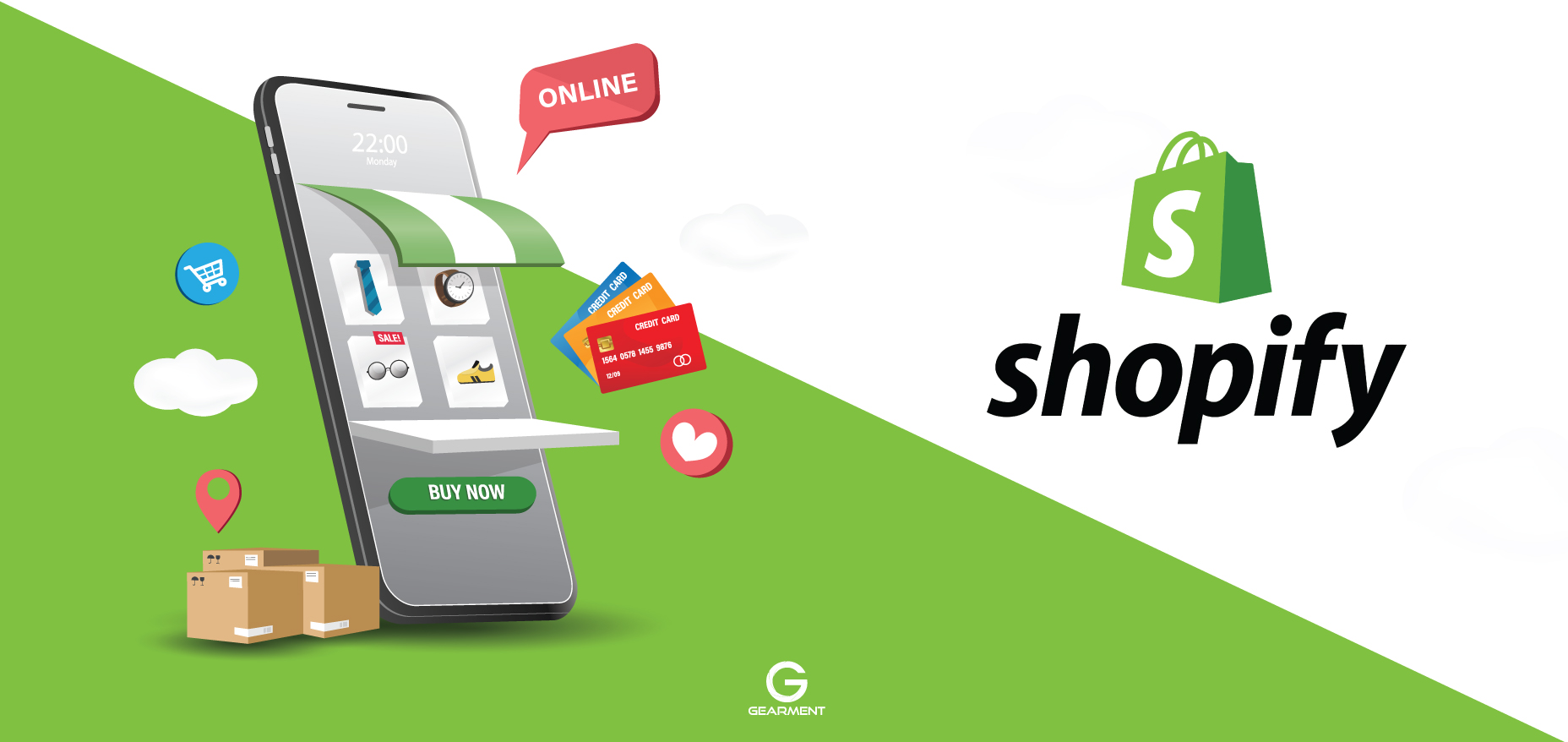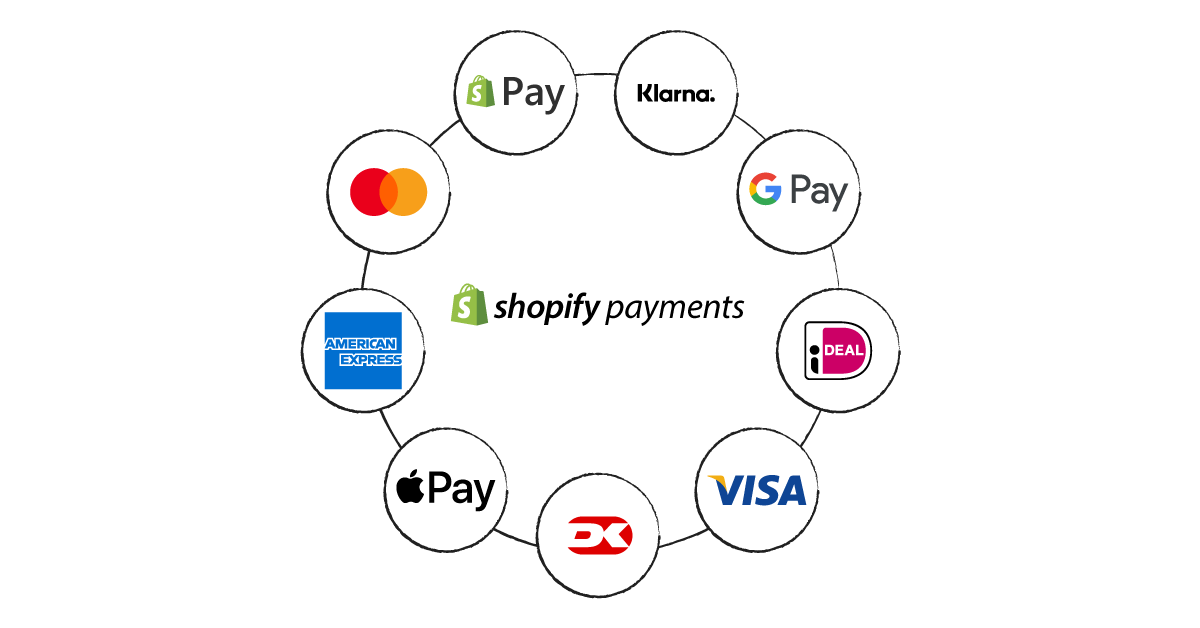
What is Shopify?
Shopify is a leading cloud-based e-commerce platform designed to empower individuals and businesses in the creation and management of their online stores. Launched in 2006, Shopify has emerged as a significant player in the e-commerce industry, providing a comprehensive solution for those looking to sell products or services online. The platform stands out due to its user-friendly interface, which allows even those with minimal technical knowledge to set up and launch their stores efficiently.
One of the key functionalities of Shopify is its extensive range of customizable templates. These themes allow users to create visually appealing online stores that reflect their brand’s identity while being responsive across various devices. In addition to aesthetics, Shopify provides multiple payment options, supporting various payment gateways such as PayPal, Stripe, and even credit card processing. This flexibility enables store owners to cater to their customers’ preferences, ultimately enhancing the shopping experience.
Inventory management is another crucial aspect of what Shopify offers. The platform includes tools for tracking stock levels, managing orders, and categorizing products, which simplifies the retailer’s workload and minimizes the chances of overselling or stockouts. Shopify also integrates with a plethora of third-party applications, expanding its functionality further, offering additional capabilities such as marketing, shipping logistics, and customer service support.
With its robust features and emphasis on ease of use, Shopify has gained immense popularity among entrepreneurs and small to medium-sized businesses. The platform’s scalability ensures that as a business grows, Shopify can adapt to increased demands and more complex functionalities. Thus, Shopify serves as a powerful e-commerce solution that facilitates the journey from initial concept to successful online retail operation, making it an attractive option for those venturing into the digital marketplace.
Why Choose Shopify for Your Online Business?
Shopify has emerged as a leading platform in the realm of e-commerce, attracting businesses of all sizes due to its myriad of benefits. One of the most significant advantages of using Shopify is its user-friendly interface, which allows users to navigate the platform with ease. This accessibility means that individuals without technical skills can create and launch an online store with minimal effort. With visually appealing templates and an intuitive drag-and-drop editor, even beginners can establish a professional-looking storefront.
Furthermore, Shopify supports an extensive array of payment gateways, making it simple for merchants to accept payments from customers worldwide. This flexibility ensures that businesses can cater to the preferences of their target audience while optimizing the purchasing experience. Shopify’s built-in tools facilitate secure transactions, which is crucial for building customer trust and encouraging repeat business.
Another notable benefit of Shopify is its robust customer support. Users have access to 24/7 assistance through live chat, email, and phone, ensuring that any concerns or questions can be addressed promptly. This level of support is invaluable, especially for those new to e-commerce who may require guidance in navigating various aspects of their online business.
Scalability is another key factor that makes Shopify a suitable choice for growing businesses. Whether you are just starting out or looking to expand your existing operations, Shopify’s infrastructure can accommodate increased traffic and transactions without compromising performance. For example, several successful brands, such as Gymshark and Allbirds, have leveraged Shopify’s capabilities to enhance their online presence and expand their customer base.
In essence, Shopify stands out as a versatile solution for entrepreneurs eager to establish a successful online presence. With its user-friendly design, diverse payment options, exceptional support, and capacity for growth, Shopify is well-equipped to meet the demands of the modern e-commerce landscape.
Step-by-Step Guide to Creating a Shopify Account
To begin your journey in e-commerce, the first step is to create a Shopify account. This process is straightforward and is designed to support even those without technical expertise. Start by visiting the official Shopify website. Once there, locate the “Start Free Trial” button, which will guide you to the registration page.
Upon clicking the button, you will be prompted to enter your email address. Ensure this is a valid email that you have access to, as it will be used for verification later. After entering your email, you will need to create a password and choose a store name. The store name you select will be part of your Shopify URL, so it’s advisable to pick something unique and memorable, reflecting your brand.
After providing these details, Shopify will ask for additional information, including your address, which is necessary for setting up shipping options. It is critical to enter accurate information as it impacts how your store operates and the shipping rates your customers will see. Once you fill in these details, click on the “Enter my store” button to proceed.
Next, Shopify will lead you through various setup options, including customizing your store theme and adding essential features. You’ll also want to set up payment methods that will enable you to receive funds from customers. Head over to the “Settings” section and choose “Payments” to add the necessary gateways, such as credit cards or PayPal.
Finally, focus on shipping options, which can be set up in the “Settings” menu as well. Being meticulous in this area is crucial, as it ensures your products reach customers efficiently. The setup process on Shopify is user-friendly, giving guidance at every turn. Following these structured steps, you will be well on your way to launching your online business.
Exploring the Shopify Dashboard
The Shopify dashboard serves as the central control panel for merchants, simplifying the management of their online stores. When users first log in, they are immediately welcomed by an intuitive interface that provides quick access to various essential features. Among these features, order management stands out, allowing store owners to efficiently view, fulfill, and track customer orders. The layout prominently displays recent orders, making it easy for users to see which products are selling and which require attention.
In addition to managing orders, the dashboard facilitates the effective organization of product listings. Users can effortlessly add new products, set prices, and manage inventory through a user-friendly interface. The product management section provides customizable options that let store owners feature variants, update descriptions, and upload high-quality images. Such flexibility ensures that merchants can represent their products precisely how they wish, appealing to potential customers through visual presentation and detailed descriptions.
Another key feature of the Shopify dashboard is its customer insights functionalities. This area presents comprehensive data on customer demographics, shopping behavior, and engagement levels. By analyzing these insights, store owners can tailor marketing strategies to target specific customer segments effectively. Furthermore, integrating customer insights with product listings can enhance sales opportunities by personalizing recommendations based on individual shopping preferences.
Lastly, the analytics tools available on the dashboard empower users to monitor their store’s performance. Merchants can track sales data, conversion rates, and overall traffic trends through well-organized reports. By understanding these metrics, store owners can make informed decisions to optimize their online presence and drive growth. Navigating through the Shopify dashboard not only makes it easier to manage an online store, but it also provides valuable resources for maximizing profitability. Overall, mastering the dashboard’s features is crucial for any merchant looking to succeed in the e-commerce landscape.
Customizing Your Shopify Store
Customizing your Shopify store is a vital step towards creating a unique online presence that resonates with your target audience. The platform offers a wide selection of themes and templates that serve as a foundation for your store’s design. When selecting a theme, consider the nature of your products, your brand’s personality, and the overall user experience you desire to provide. It is important to choose a theme that not only looks appealing but is also responsive and user-friendly, ensuring that your customers have an enjoyable shopping experience across all devices.
Once you have settled on a theme, you can begin to adjust various design elements to reflect your brand identity. This may include customizing the color scheme, typography, and layout to maintain consistency with your branding efforts. Adding your logo prominently on the site can help foster brand recognition and trust. Additionally, consider incorporating high-quality images and engaging content to enhance visual appeal and encourage customers to explore your products further.
Moreover, user experience optimization plays a crucial role in retaining customers. Ensure that your navigation is intuitive and straightforward, allowing visitors to easily find what they’re looking for. Adding sections for featured products, best sellers, or seasonal promotions can also capture attention and drive sales. Utilize product descriptions that are informative yet engaging, enhancing both the aesthetics and functionality of your store.
Furthermore, do not underestimate the power of personalization. Personalizing your Shopify store to cater to the preferences and behaviors of your target audience can significantly contribute to customer retention. This may involve integrating personalized recommendations based on browsing history or past purchases, thereby creating a more tailored shopping environment. Ultimately, effective customization not only enhances your store’s appeal but also plays a crucial role in converting visitors into loyal customers.
Adding Products to Your Shopify Store
Adding products to your Shopify store is a crucial step in establishing a successful online retail presence. The process starts with logging into your Shopify account and navigating to the ‘Products’ section. Once there, you can easily add a new product by clicking on the ‘Add Product’ button. This action will lead you to a new page where you can input all necessary details regarding the item you wish to sell.
Compelling product descriptions are essential as they provide potential customers with important information about what they are purchasing. It is advisable to describe the product’s features, benefits, and usage scenarios clearly and concisely. Incorporating keywords that resonate with your target audience can improve search engine visibility, which is vital for reaching more customers. Aim for a balance between informativeness and engagement, ensuring that potential buyers find the text appealing.
Uploading high-quality images of your products is equally important. Sharp, well-lit images that showcase the product from multiple angles can significantly enhance the shopping experience, allowing customers to feel more confident in their purchasing decisions. Remember to optimize image file names and alt texts using relevant keywords to further improve SEO performance.
Setting a competitive yet profitable pricing strategy involves considering costs, competitor pricing, and perceived value. Establish clear pricing models that reflect both the product value and market standards. Additionally, effective inventory management is essential to prevent stockouts or overstock situations. Utilize Shopify’s inventory features to keep track of stock levels, and categorize products into relevant collections or tags. This organization ensures that customers can navigate your store easily, thus improving their shopping experience and increasing the likelihood of conversions.
Setting Up Payment Gateways
When it comes to establishing an online store using Shopify, one of the most crucial aspects is selecting and setting up payment gateways. A payment gateway serves as the bridge between your online store and your customers’ banks, ensuring secure and efficient transactions. Shopify supports various payment gateway options to accommodate different business needs and preferences.
The most popular payment gateway on Shopify is Shopify Payments, which is integrated seamlessly into the platform. This option allows merchants to accept various payment methods, including credit cards and digital wallets like Apple Pay and Google Pay. One significant advantage of using Shopify Payments is that it reduces transaction fees compared to third-party gateways. Furthermore, using this gateway enhances the overall shopping experience as it enables faster checkout processes.
In addition to Shopify Payments, other widely used payment gateways include PayPal, Stripe, and Authorize.Net. PayPal is a preferred option for many customers due to its user familiarity and trustworthiness. While it may come with higher transaction fees, its global reach and ease of use can outweigh these costs. Stripe is another excellent choice, known for its developer-friendly interface and extensive features, such as subscription billing and mobile payments. However, businesses should be aware of the associated fees and how they might impact overall revenue.
Security is paramount when selecting a payment gateway. Look for options that comply with Payment Card Industry Data Security Standards (PCI DSS) to ensure that customer data is protected. Shopify provides SSL certificates for all stores, offering an added layer of encryption for payment transactions. Therefore, it is essential to evaluate the security features and protocols of each payment gateway before making a decision.
In conclusion, choosing the right payment gateway for your Shopify store is essential for facilitating smooth transactions and providing peace of mind for both you and your customers. By considering transaction fees and security measures, merchants can select the most appropriate gateway to help grow their online business effectively.
Marketing Your Shopify Store
Successful marketing is crucial for the growth and visibility of your Shopify store. By employing effective strategies, store owners can attract potential customers and foster long-term relationships. A well-rounded marketing approach typically incorporates various methods, including social media, email marketing, SEO, and content marketing.
Social media platforms are powerful tools for promoting a Shopify store. Engaging with followers on platforms such as Facebook, Instagram, and Twitter can not only raise awareness but also help establish a brand identity. It is essential to create compelling content that resonates with your target audience. Additionally, utilizing paid advertising options on these platforms can further expand reach and attract new customers.
Email marketing is another vital component of a comprehensive marketing strategy. By building a mailing list, store owners can communicate directly with their customers, providing updates on products, promotions, and personalized offers. Creating visually appealing newsletters with engaging content can help maintain customer interest and drive repeat purchases.
Search engine optimization (SEO) is critical for improving the visibility of your Shopify store in search engine results. By optimizing product descriptions, images, and page titles with relevant keywords, store owners can attract organic traffic. Furthermore, implementing a blog within the Shopify platform can help generate valuable content, improving both SEO performance and customer engagement.
Content marketing should not be overlooked, as it plays a significant role in building trust and credibility with potential buyers. Creating high-quality, informative content, such as how-to guides or product reviews, can help demonstrate authority in your niche. By sharing this content on social media and through email marketing, store owners can further engage their audience and encourage them to visit their online store.
Shopify offers several built-in marketing tools and third-party integrations that can simplify these processes. By leveraging these resources, store owners can efficiently manage their marketing efforts and maximize their store’s visibility and customer reach. From social media integrations to email marketing applications, these tools are designed to support your online business effectively.
How to Earn Money from Your Shopify Store
Setting up a Shopify store opens numerous avenues for earning money, but success largely depends on the strategies employed. One of the most common methods is selling physical products. Merchants can select either to create their own unique products or source them from wholesalers. Ensuring that the selected products cater to the interests and needs of the target audience increases the likelihood of generating sales. A well-researched inventory coupled with effective marketing can drive significant traffic to the store.
Another profitable approach within the Shopify platform is offering digital products. This can include e-books, online courses, or downloadable media files. Digital products benefit from low overhead costs since no physical stock is required. This allows for higher profit margins and the potential for perpetual sales without restocking. Proper categorization and targeted advertising campaigns can enhance visibility and attract customers specifically interested in digital offerings.
Dropshipping represents another lucrative method of income generation. Store owners can sell products sourced from suppliers without handling inventory. When a customer makes a purchase, the store owner forwards the order to the supplier, who then ships the product directly to the customer. This model reduces financial risk as there is no need to invest in bulk inventory. However, selecting reliable suppliers and maintaining transparency with customers about shipping times are crucial to maintaining a good reputation.
Print-on-demand services offer a unique angle for sellers looking to create custom products. This model allows entrepreneurs to design merchandise such as t-shirts, mugs, or tote bags that are created and shipped only after an order is placed. It’s highly adaptable, allowing for creative freedom without significant upfront costs.
Ultimately, understanding the target audience, employing effective pricing strategies, and optimizing profit margins are essential components in developing a successful Shopify store. By leveraging these diverse revenue strategies, sellers can maximize their earnings and create a sustainable online business.





